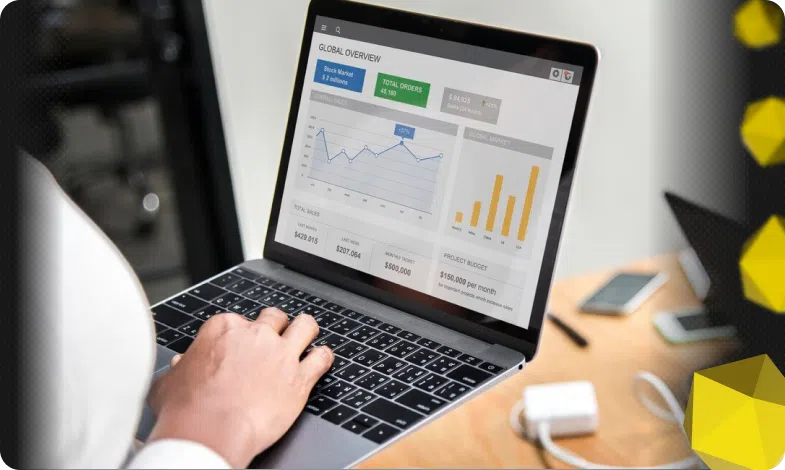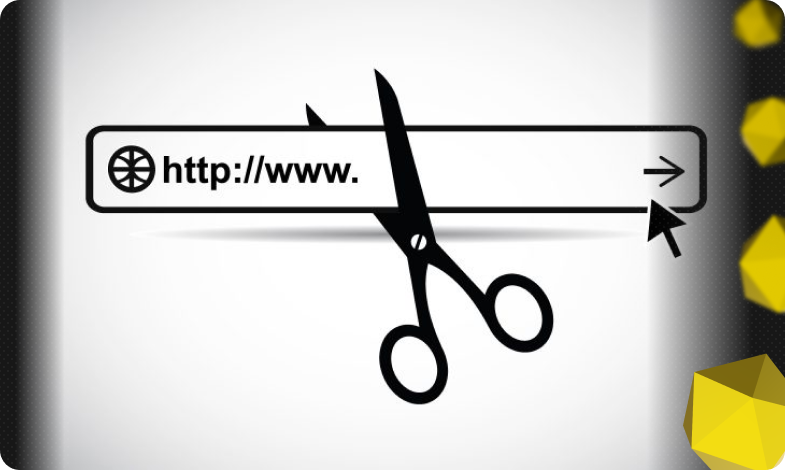Content of the article

Electronic commerce or in other words, e-commerce is a business format interconnected with the sale of services or goods using the internet. This includes not only the purchase of dishes, furniture, toys or clothing, but also the purchase of concert tickets, insurance, apps, software and money transfers.
The concept itself first appeared in the United States on August 11, 1994. The world’s first online purchase of Sting’s Ten Summoner’s Tales CD was made there. Since that very moment, despite various difficulties, the sphere has achieved more and more popularity every year.
What is the meaning of e-commerce?
This field is quite broad: in addition to online sales, it includes a variety of internet banking, which deals with online transactions, and internet marketing, which covers advertising and activities aimed at increasing conversions.
The technical element of e-commerce contains:
- a database with services and products;
- an online store;
- CRM system;
- a system for delivering products to the customer.
Of course, this is a very simplified scheme, as any of the listed categories can be described in more detail. However, the main element will serve as a properly working and properly built server, as it is it that affects the speed of loading the site.
E-commerce materializes in a variety of niches based on its target audience. Here are some examples of its effective implementation:
- online stores of various goods (they hold almost the entire sphere of e-commerce).
- local and global marketplaces (for example, OLX, Rozetka, Amazon, AliExpress).
- Subscriptions to books and music, online movie theaters (allow you to enjoy the results of intellectual activity).
- Courier services (e.g., Delivio, Glovo).
- Online banking and financial systems (online payments and banking are used by all banks these days, and this includes financial systems such as PayPal and more).
- Payment for public services through online services (they have become very popular, as there is no need to spend time in queues in order to pay for utilities).
- Internet marketing and electronic software sales services (App Store, Google Play, Google Ads).
Concept of how e-commerce works
E-commerce is a branch of the economy that deals with various types of online payments and e-commerce transactions. The plus point of e-commerce is that there are no borders. AliExpress or Amazon sellers make their goods available all over the world. So do developers who publish applications in Google Play and App Store. And a local Ukrainian clothing brand can sell its goods all over Ukraine.
Online commerce is available thanks to e-commerce systems: for example, selling in an online store allows sellers to increase their geography without opening new branches. For small businesses, a universal and simple method of online sales is to provide goods in marketplaces. This way, you can distribute goods across the country without worrying about transportation. A buyer places an order on a website, it goes to the server and stays in the database. If the transaction did not go through, after some time the consumer can be reminded of the goods that went into the shopping cart. If the purchase has passed – to recommend subscribing to advertisements, to offer goods on promotion or a discount on the next order. In this way you can motivate the customer to turn to you again for a new purchase.
Stages of e-commerce:
- The consumer is determined with the service or product presented in the catalog, his gadget communicates with the browser.
- The order goes to the server, it is received by the manager.
- Using the database, the manager checks if the product is in stock and approves the order. This happens either manually or automatically, depending on how the system is configured.
- The customer pays for the order with a bank card. The bank processes the transaction, then authorizes or rejects it. If the transaction is approved, the order goes into processing.
- The order is then sent to the warehouse. Transportation department employees take the order from the warehouse and from there transfer it to the delivery point or directly to the customer’s address.
- Once the order is delivered, the recipient receives a text message or email.
Although this is an approximate e-commerce algorithm, it applies to both physical goods and electronic services or products. The only difference is that the purchase is not transported, but access is given in order to download it. If it’s a service, they give you a time and date to talk to the specialist whose services you need.
Types of e-commerce
The proposed categories are formed on the difference in end users:
- B2B (Business-to-Business) – A profitable relationship between business people. Manufacturers and merchants connect with each other through specific online marketplaces.
- B2C (Business-to-Consumer) – Businesses sell goods to customers on different online marketplaces. Contains many positive aspects for both buyers and entrepreneurs.
- B2G (Business-to-Government) – the company provides certain services to the government or its subdivisions. In such a situation, there are special requirements for the company. There is often a lot of competition, as the level of the contract is quite high.
- C2C (Consumer-to-Consumer) – interconnection between consumers, which takes place by means of electronic advertisements.
- G2C (Government-to-Citizens) – the relationship between the government and an individual: obtaining various documents, paying fines and taxes. Often carries an informational meaning, so it is often not entrepreneurship.
- G2G (Government-to-Government) – business relationships of government agencies.
- B2P (Business-to-Partners) – cooperation between branches or companies from the same field.
- B2E (Business-to-Employee) – automatic regulation of business processes and responsibilities within an organization.
- B2B2C (Business-to-Business-to-Customer) – combining the two types (as an example, dropshipping). A businessman buys goods in another country and coordinates with warehouses to ship orders to the required addresses, circumventing the need to store the goods in-house.
- E2E (Exchange-to-Exchange) – activity between different digital exchanges in currency exchange services.
Pros and cons of online commerce
Ecommerce is a field that just like any other field has its positives and negatives.
The advantages of online commerce include:
- Reducing the amount of financial spending. This sphere much simplifies all processes – to launch a retail outlet you will no longer need to rent an area, find employees and negotiate with delivery. Everything mentioned above can be set on an automatic mechanism, as a result of which, the goods will become more attractive in price, which cannot help but please buyers.
- Active growth of the industry. The global e-commerce market is expanding every year. More and more consumers like to shop online. Many services are emerging to help improve the performance of online businesses.
- Large reach of potential buyers. With the help of the Internet, you can easily go abroad to conquer markets. Only in case you offer physical products, you need to think well about the process of transportation of goods to the buyer.
- Reducing the number of intermediaries. You have the opportunity to communicate directly with the manufacturer of goods, as well as sell goods without opening branches, which automatically eliminates the presence of third parties and improves the quality of service.
- Full business control. Tracking and analytics are fully visible, the progress of the enterprise is always under your supervision.
- Increased number of potential customers. There is no need to look for a good location for a retail outlet so that your target audience sees you more often. A consumer will easily find you by a search query when following a link from an online advertisement or discovering you in a marketplace. In case they never make a purchase, online advertising will remind them of your business.
The disadvantages of e-commerce include:
- Technical dependency. Malfunctioning equipment or lack of access to the Internet (also poor Internet coverage) will have a negative impact on conversion.
- Nuances of transactions with payment systems. In order to receive funds, you need to register a PE. It is necessary to provide high-quality service for consumers in order to ensure that the reception and withdrawal of money was stable. Otherwise, customers will start disputes through the bank, as a result of which the payment system can cut the online entrepreneur’s ability to accept payment from customers.
- Increased competition among companies.
- Frequent changes and amendments in legislation. The sphere is actively expanding, so it is constantly facing many changes.
- Difficulties in protecting information. In the industry of e-commerce cannot cope without the exploitation of difficult certification.
- Copyright compliance. Unauthorized repetition of intellectual property products can create enough problems for business because it does not bring income to its owners.
Specifics of marketing in e-commerce
- Businesses use information about customers – name, location, interests and habits. This makes it easier to personalize the offer – address them by name and recommend a product that might pique their interest.
- Mobile marketing. Nowadays, people are increasingly buying something with a cell phone, and store apps are used twice as often as their websites.
- e-assistants. About 40% of consumers turn to voice assistants to make an online purchase. Virtual assistants answer frequently asked questions and select the right product.
- These are free samples – a lipstick sample, a bottle of soda from a delivery service, a trial foreign language class. This helps to promote a product or service both online and offline.
- Interactive marketing. This is interaction with information: take some test, do calculations in a calculator, give answers to quiz questions. Such things amuse and entertain the consumer, and meanwhile, marketers get to share information about the product.
Prospects for e-commerce
Every year more and more entrepreneurs stop using classic methods of sales, choosing something interesting and new that will stand out not only in the eyes of consumers, but also among competitors. After all, this approach directly affects the conversion rate of the store.
Recent changes in e-commerce include: the growing popularity of marketplaces, targeting a younger generation, the introduction of chatbots, the use of voice commerce, video consultations from offline stores, shorter delivery times, personalization, diversity in payment options, product subscriptions, increased spending on customer engagement.
All of the above trends indicate that this area continues to grow strongly and will not stop there. Most likely, in the next 20 years, all purchases will gradually move to the online mode. The credibility of online shopping is growing, and millions of consumers enjoy how easy and simple it is now to buy everything they need online. So, it stands to reason that e-commerce is experiencing such a boom.
To summarize
E-commerce is one of the most ambitious and actively developing fields. A significant number of advantages compared to offline commerce and continuous improvement attract the attention of new consumers and manufacturers. At the same time, one should not think that it is so easy to succeed in e-commerce. You need to put in enough effort for effective results, but in the end, your hard work will definitely be rewarded.







 14/07/2023
14/07/2023  4003
4003


